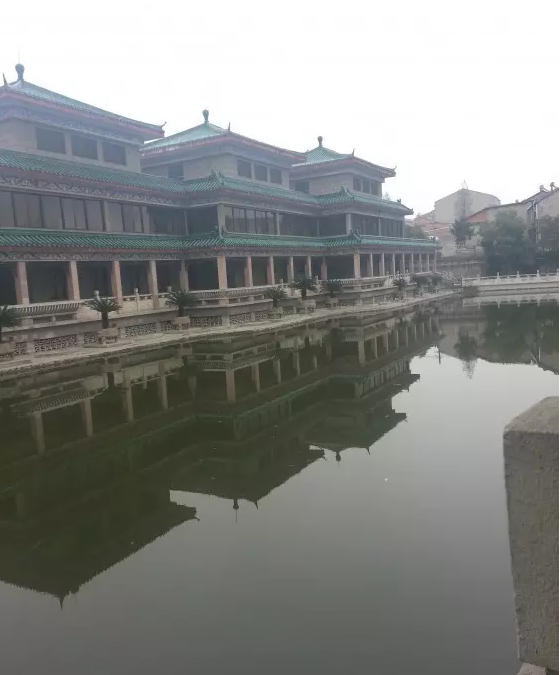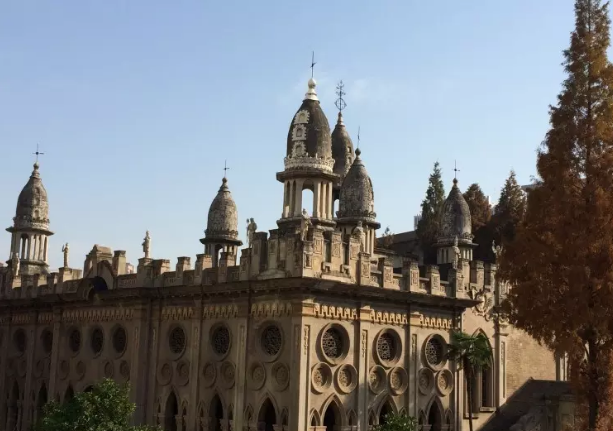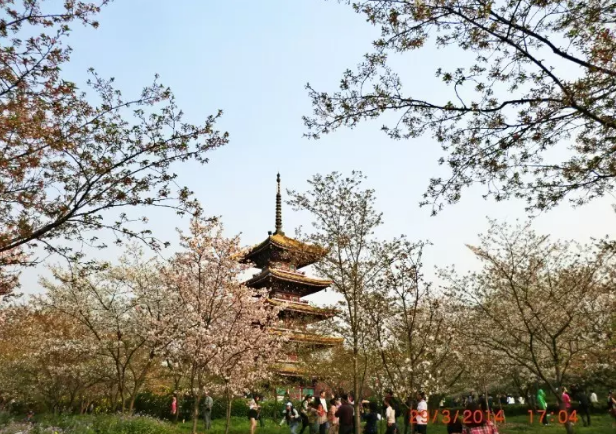Sightseeing
Wuhan Yellow Crane Tower
Opening hours: 7:30-18:30 (April 1st to October 31st); 7:30-17:30 (November 1st to March 3rd)
Ticket price: 80 yuan
Address: No. 1 West Hill Pote, Sheshan Mountain, Wuchang District, Wuhan
Introduction:
The Yellow Crane Tower is located on the top of the Wuchang Snake Mountain on the south bank of the Yangtze River in Wuhan City, Hubei Province. It is on the edge of the Yangtze River. It is a national 5A-level tourist attraction and one of the "Three Famous Buildings in the South of the Yangtze River". "The name. The Yellow Crane Tower is a landmark building in Wuhan, and it is called the "Three Famous Places in Wuhan" together with Qingchuan Pavilion and Guqin Terrace.
The Yellow Crane Tower was built in the second year of Wu Huangwu in the Three Kingdoms period (AD 223). During the Three Kingdoms period, the building was only a "military building" at the corner of Xiakou City. At the same time of military value, with the development of Jiangxia city, it has gradually evolved into a viewing tower for the "you must be there" and "the banquet must be" for the official business travel. The poet Cui Hao of the Tang Dynasty wrote a poem "Yellow Crane Tower" with this title. Li Bai wrote "Yellow Crane Tower to Meng Haoran's Guangling Mausoleum" here. The literati and writers of the past dynasties left many sings here, making the Yellow Crane Tower since ancient times Well-known.
The Yellow Crane Tower is located on the top of the Snake Mountain at an altitude of 61.7 meters. It was designed based on the "Tongzhi Tower" of the Qing Dynasty. The trains on the Beijing-Guangzhou Railway roared downstairs. The building has 5 floors, a total height of 51.4 meters, and a building area of 3219 square meters. The inside of the Yellow Crane Tower is supported by 72 columns, and the outside has 60 angled angles extending outward. The roof is constructed by covering more than 100,000 yellow glazed tiles.

Hubei Provincial Museum
Opening hours:In the morning, 8:30--12:00 (stop admission at 11:30); afternoon, 13:30-17:00 (stop admission at 15:30). Open on holidays.
Introduction:
The Hubei Provincial Museum is a local museum in China. It is located by the Wuchang East Lake in Wuhan, covering an area of 40,000 square meters. Established in 1953. There are nearly 9,000 cultural relics in the collection, most of which have local characteristics. Among the more precious are letters, manuscripts, photographs, newspapers and periodicals reflecting the historical facts of the revolutionary struggle in Hubei; chronological weapons of the Taiping Heavenly Kingdom and stone carvings of the city gate; the notice of the first uprising of Wuchang during the Revolution of 1911, the city entrance certificate and some documents. In terms of historical cultural relics, the most prominent are the unearthed cultural relics, including stoneware, pottery, bronze, lacquer, etc. The most typical collections are Qujialing culture, Chu history, and ancient musical instruments. Among them, the Yuewang Goujian sword unearthed in Jiangling, The large-scale set of chimes from Zenghouyi unearthed in Suixian and Wu Wangfu Chamao are extremely precious, and they have been cherished by Chinese and foreign scholars since they were unearthed. Since the establishment of the museum, nearly a hundred exhibitions have been held, including "Hubei Province Natural Environment and Natural Resources Exhibition", "Exhibition of Cultural Relics Unearthed from the Tomb of Marquis Yi Zeng", "Hubei Warring States and Qin and Han Lacquer Exhibitions", "Comrade Dong Biwu Memorial "Exhibition", "Exhibition of Revolutionary Struggle History of the Fifth Division of the New Fourth Army", etc. Among them, "Exhibition of Cultural Relics Unearthed from the Tomb of Zenghouyi in Suixian County" displays 600 pieces of bronze ware, lacquerware, weapons, musical instruments, etc. selected from more than 10,000 cultural relics unearthed from the tomb. The scientific results of the research are rich in content, and the form design is relatively novel. The main publications include "Qujialing Mountain in Jingshan", "Qin Tomb in Yunmeng Sleeping Tiger Land", and "Tomb of Zenghou Yi in Suixian County".

Wuhan East Lake Scenic Area
Opening hours: open all day
Tickets: RMB 80 for a day trip on the East Lake Cruise, RMB 100 for a night cruise
Introduction:
East Lake is located in the east of Wuhan City. In 1982, it was listed as the first batch of national key scenic spots by the State Council. The entire scenic area covers an area of 88 square kilometers, with a planned construction area of 73 square kilometers, accounting for about a quarter of the urban area. It receives more than two million tourists every year and is the largest scenic spot in Wuhan.
It can be visited in all seasons and is known as "Chunlan, Autumn Osmanthus, Summer Lotus, and Winter Plum". March orchids and April cherry blossoms, the lake is as flat as a mirror, and birds and birds sing the forest; July is raging, the heat is too hot, the lake is soaked, and the regional temperature is lower than the average temperature in the city. Enter the swimming pool to cool off, lean in the shade and enjoy the coolness. Climbing the top of the mountain can gather the wind, the autumn is high and the air is refreshing, the osmanthus buds bloom, ten miles of fragrance, thousands of red leaves, the forests are all dyed; the mid-winter is severe, the snow is swelling, and the hundreds of acres of plum blossoms bloom in Moshan. Ladies and gentlemen are coming.
After 50 years of development and construction, the East Lake Scenic Area has become a scenic spot with beautiful scenery and rich scenery. In 1999, it was awarded the "National Civilized Scenic Tourism Area Demonstration Unit" by the Central Committee for the Construction of Spiritual Civilization, the Ministry of Construction of the People's Republic of China, and the National Tourism Administration. In January 2001, it was rated as AAAA by the Tourism Administration of the People's Republic of China Scenic Area.

Gudesi Temple
Ticket price: free
Introduction:
At 21 Huangpu Road, Hankou, Wuhan. Among the four major Buddhist jungles in Wuhan, the history of Gude Temple is shorter than that of the other three temples. In 1877 (the third year of Guangxu, Qing Dynasty), a Zen master named Longchang built on the slopes of the east section of Jiefang Avenue and the north section of Huangpu Road in Hankou. Then, the incense was flourishing day by day. In the autumn of 1921. The expansion project took 13 years to 1934 to be completed. Gude Temple sits east facing west, covering an area of more than 20,000 square meters at the largest scale, with a building area of more than 3,600 square meters. The building inside the temple was severely damaged during the "Cultural Revolution", and all Buddhist relics and religious facilities were destroyed. As a key cultural relic protection unit in Wuhan, Gude Temple has undergone a comprehensive restoration to restore its quaint and solemn original Gude Temple. The existing Temple of Heavenly Kings, Daxiong Hall, Juehuan Temple, Guanyin Hall, Tibetan Scriptures and so on. The main building, the Daxiong Hall, is built in the form of the Ananda Temple in Myanmar. The top is 9 pagodas, 96 nine lotus piers, twenty-four Buddhas, etc., which symbolize the worship of the Nine Dragons. The layout is ingenious, the structure is rigorous, and the doors, windows and walls are exquisitely designed. Gorgeous decoration, showing outstanding achievements in architectural art.

East Lake Moshan
Opening hours: The departure time is during the day: 10:00; 11:00; 12:00; 14:00; 15:00; 16:00; Chu River Night Tour Han Street Wharf departure schedule: 18:00; 19: 00; 20:00
Tickets: from 45 yuan
Introduction:
The ancient name Moershan is round like a mill, hence the name. It is the main mountain range in the mountains along the East Lake. It is surrounded by water on three sides and has six peaks. It is 8 li long and the main peak is more than 100 meters high. It is called "Ten Li Long Lake and Bali Mo Mountain", with excellent scenery. In the north of the mountain, there is a Chu cultural tourist area with the Chu culture as its connotation; in the south of the mountain, there are thirteen special botanical gardens mainly composed of native plants in the lake area; on the western hill there is a Zhubei Pavilion commemorating Zhu De's inscription on the East Lake. Starting from the north, Moshan Scenic Area has four scenic spots, including Chutian Jimu, Tiantai Dawn, Changchun Garden, and Zhubei Pavilion.


